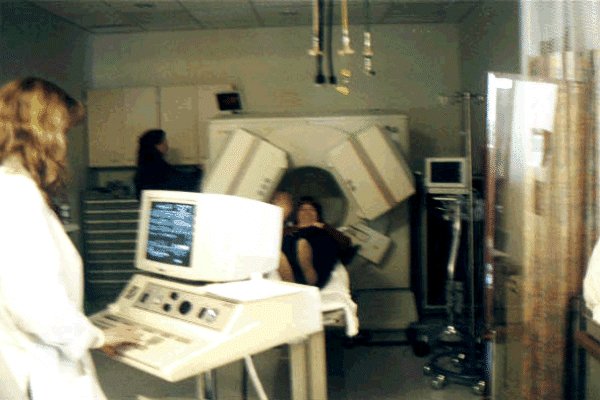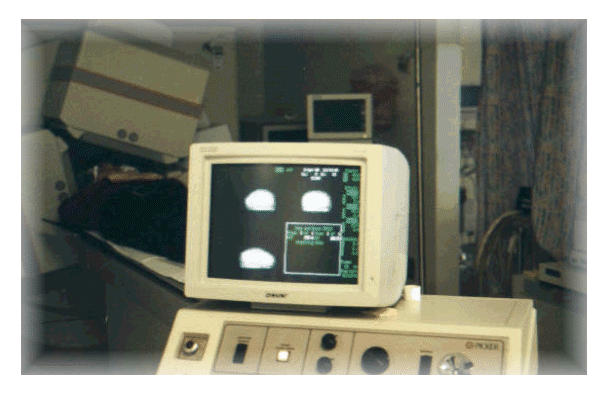Monozygotic Twins Discordant for Chronic Fatigue Syndrome: Regional
Cerebral Blood Flow SPECT  Authors: David H. Lewis, MD, Helen S. Mayberg, MD, Mary E. Fischer, MS, Jack Goldberg, PhD, Suzanne Ashton, BS, Michael M. Graham, MD, PhD and Dedra Buchwald, MD Affiliations: From the Departments of Radiology (D.H.L., M.M.G.) and Medicine (D.B., S.A.), University of Washington, Seattle; the Department of Epidemiology and Biostatistics, University of Illinois, Chicago (J.G., M.E.F.); and the Department of Psychiatry and the Rotman Research Institute, University of Toronto, Ontario, Canada (H.S.M.). Received June 29, 2000; revision requested August 10; final revision received November 30; accepted December 4. D.B. supported by National Institutes of Health grant U19 AI38429. Address correspondence to D.B., Harborview Medical Center, 325 Ninth Ave, Box 359780, Seattle, WA 98104. NLM Citation: PMID: 11376266 Abstract: PURPOSE: To evaluate the relationship between regional cerebral blood flow (rCBF) and chronic fatigue syndrome (CFS) in monozygotic twins discordant for CFS. MATERIALS AND METHODS: The authors conducted a co-twin control study of 22 monozygotic twins in which one twin met criteria for CFS and the other was healthy. Twins underwent a structured psychiatric interview and resting technetium 99m–hexamethyl-propyleneamine oxime single photon emission computed tomography of the brain. They also rated their mental status before the procedure. Scans were interpreted independently by two physicians blinded to illness status and then at a blinded consensus reading. Imaging fusion software with automated three-dimensional matching of rCBF images was used to coregister and quantify results. Outcomes were the number and distribution of abnormalities at both reader consensus and automated quantification. Mean rCBF levels were compared by using random effects regression models to account for the effects of twin matching and potential confounding factors. RESULTS: The twins with and those without CFS were similar in mean number of visually detected abnormalities and in mean differences quantified by using image registration software. These results were unaltered with adjustments for fitness level, depression, and mood before imaging. CONCLUSION: The study results did not provide evidence of a distinctive pattern of resting rCBF abnormalities associated with CFS. The described method highlights the importance of selecting well-matched control subjects.    Regional cerebral bloodflow in chronic fatigue syndrome (CFS) R. Casse, P. Delfante, L.Barnden, R. Burnett, M. Kitchener, R Kwiatek The Queen Elizabeth Hospital, Adelaide, 5011 Australia Chronic fatigue syndrome (CFS) is a debilitating and complex disorder characterised by profound fatigue and neuropsychiatric dysfunction. The neuropsychiatric symptoms are often associated with a mental fatigue, consisting of impaired concentration and slowness of thinking. Patients with this disorder have been studied with radionuclide cerebral perfusion scans with conflicting results. Most previous studies were performed with inhomogeneous patient populations and were not analysed with Statistical Parametric Mapping (SPM). We performed a pilot study to address these issues with Tc-99m HMPAO SPECT and a triple head gamma-camera. A uniform group of 13 female subjects (16-53y) with moderate CFS based on established criteria, pain free, not on medication and not depressed was compared with a group of 11 patients (18-60y) who were scanned for other conditions and reported as normal. Visually, a deficit in regional cerebral bloodflow (rCBF) in the medial temporal lobe was definite in 7 (5L, 1R, 1 bilateral) and equivocal in 3 CFS patients. SPM99 with proportional scaling to the global mean was applied for quantitative analysis. The location, amplitude and corrected p-value of significant focal deficits in CFS were: brainstem (19%, 0.009), left medial temporal lobe (17%, 0.004), right medial temporal lobe (22%, 0.002), frontal lobe (17%, 0.002) and anterior cingulate gyrus (12%, 0.001). These results are to be confirmed against a "true normal" group of volunteers. There appears to be objective evidence that patients with moderately severe CFS have focal cortical and brainstem hypoperfusion.    Brain link to fatigue syndrome Source: Sydney Morning Herald Date: May 4, 2002 Author: Julie Robotham, Medical Writer URL: http://www.smh.com.au/articles/2002/05/03/1019441434909.html An area of the brain that controls the stomach receives substantially less blood in some people with chronic fatigue syndrome, a study shows. The finding adds more weight to the argument that the controversial illness is biological, not psychological. Brain scans of 40 chronic fatigue patients were carried out by Adelaide scientists and compared against the scans of healthy people. The director of nuclear medicine at Queen Elizabeth Hospital, Dr Steven Unger, who headed the study along with neurologist Dr Rey Casse, said: "There was a very strong change in cerebral blood flow in patients." The study showed a reduction in blood flow to the brain's insula cortex, which governs the smooth muscle in the gut. Unexplained stomach and bowel symptoms are common complaints for chronic fatigue patients. The findings also showed a 20 per cent reduction in blood flow to the left lateral temporal lobe, which controls access to words, in younger chronic fatigue patients. Severe sufferers often experience difficulty expressing themselves. In separate research, endocrinologist Dr Richard Burnett, of the Royal Adelaide Hospital, has shown that chronic fatigue patients who report gastric symptoms empty fluid from their guts at less than half the speed of people who are well. "Talking to patients, about half of them have some kind of [gut symptoms], such as abdominal bloating after eating a small meal," he said. "A delay in liquids means a central problem. It comes from the brain." (c) 2002 The Sydney Morning Herald   
|